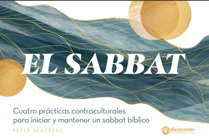The World’s Most Inaccessible Church
Located in the Tigray region of northeastern Ethiopia is the Abuna-Yemata-Guh Church, rightly called the world’s most inaccessible place of worship. (I also call it “the world’s least seeker-sensitive church” as well). My daughter and son-in-law visited there last month and returned, like many before them, struck with wonder at the vitality and richness of the church and her ministry. The church is carved into the rocks (from around the 6th century) and located at the top of a mountain. The 2-hour hike involves climbing barefoot and walking along narrow cliffs. (I am told, however, that people from the village can do the hike in around thirty minutes). Consider the pictures below: Evangelical Protestantism has a very short history compared to the Ethiopian Orthodox Church that traces her history back to Philip’s encounter with the Ethiopian eunuch (Acts 8:26-40). Perhaps you can help me with the question I am holding before the Lord: How. Read more.






